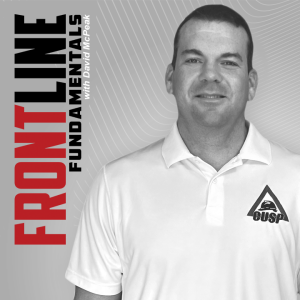7.6K
Downloads
31
Episodes
From the creators of Incident Prevention magazine, the Incident Prevention Institute (iP Institute) exists to provide professional development opportunities to those in the utility industry. It features a wide range of educational products, developed by those who have years of experience dealing with the unique safety challenges faced by utilities. Subscribe to our podcast to get insights, education and strategies from leading utility safety experts.
Episodes

2 days ago
2 days ago
“Shepherding Safety: Leadership Lessons from the C5 Model”
In this episode, we explore how safety leaders can learn from the timeless role of the shepherd. Just as shepherds guide, protect, and inspire their flock—even when wolves are near—effective safety leaders embrace Competence, Commitment, Caring, Courage, and Credibility to protect their teams and drive a strong safety culture. Join us as we break down the C5 Model and discuss practical ways to embody these principles every day on the job.
Read the article: https://incident-prevention.com/blog/the-good-shepherd/
✅ Key Takeaways
- Great safety leadership requires more than policies; it demands human connection, integrity, and courage.
- The C5 Model—Competence, Commitment, Caring, Courage, Credibility—offers a clear framework for building trust and influence.
- A leader must stand firm in the face of challenges (“the wolves”) to ensure the team’s well-being.
- Caring isn’t weakness—it’s essential for earning trust and motivating safe behavior.
- True leadership means being willing to do the hard, unpopular things to protect others.
3 Questions and Answers
Q1: What is the C5 Model in safety leadership?
A1: The C5 Model stands for Competence, Commitment, Caring, Courage, and Credibility. It’s a framework that helps leaders focus on personal qualities essential to earning trust and guiding their team toward safe outcomes.
Q2: Why is the shepherd analogy relevant to safety leadership?
A2: Like a shepherd protecting the flock, safety leaders must guide, protect, and sometimes confront danger to keep their people safe. It highlights the leader’s responsibility to anticipate threats and care for their team even when it’s difficult.
Q3: How can safety leaders show “Caring” without seeming weak?
A3: Caring means being genuinely concerned for your team’s well-being. It builds trust and respect, showing workers they matter. Far from weakness, it’s a strength that motivates people to follow safety guidance willingly.
Register FREE to be apart of the next Free Frontline Fundamentals - https://us06web.zoom.us/webinar/register/6817011082585/WN_1AiwFJXbSCqNyQ5q16Js5w
Webinar sessions that coincide with the Frontline Fundamentals Articles in the Incident Prevention magazine written by David McPeak, Director of Education. This webinar will provide you with tools, tips and advice to help your Frontline team to become even better Safety Leaders. It is a small sample of the in-depth Frontline Training program that can be done online or delivered on your company’s learning management system (LMS).
Check out all the articles written in iP Magazine for Frontline Fundamentals - https://ip-institute.com/frontline-webinars/
Visit www.ip-institute.com for more training and education!
“Safety as a Core Value: Making Human & Organizational Performance Stick”
In this episode, we explore why true safety goes beyond reacting to incidents—it starts long before. We unpack powerful, low-risk ways to practice Human & Organizational Performance (HOP) tools (like “say-it-out-loud,” checklists, E+R=O) in everyday life, building a foundation so these habits carry over when it really matters. Join us as we discuss how caring—not fear—drives safety, and why making safety a value rather than just a priority can prevent harm before it happens.
✅ Key Takeaways
-
Learning before failure: Unlike hot stove lessons, we can intentionally develop safety values before major incidents occur.
-
Safety vs. “priority”: True safety is non-negotiable—unlike when we say “except when…”.
-
The power of caring: Caring drives us to anticipate risk—like parents child‑proofing before birth.
-
Practice HOP tools now: Saying “garage door down,” using packing checklists, proofreading—simple acts that ingrain safety habits.
-
Event + Response = Outcome: A pause before reacting can turn rushed decisions into mindful actions.
-
Choose growth over reaction: You can wait for an incident or proactively build safe practices because you care.
❓ 3 Questions & Answers
Q1: What differentiates making safety a “value” from a “priority”?
A1: A value means it’s non-negotiable—safety always comes first—while a priority can be deferred, leading to compromises and weakeness in approach.
Q2: How does practicing HOP tools in everyday life help at work?
A2: The everyday practice of tools like checklists or saying instructions out loud builds muscle memory and cognitive habits that carry over into high-risk situations when you really need them.
Q3: Why is “caring” so critical to building a safety culture?
A3: Caring motivates us to protect—even before danger is evident. Like parents covering outlets before a child arrives, caring can create preemptive protections that prevent harm.
Here are some valuable resources you may want for your team - some at no cost even.
iP Utility Safety Conference & Expo, this is held twice a year. you can earn CUSP/Certification points here -
Register for the iP Utility Safety Conference & Expo
Utility Safety Podcast - Search "Utility Safety Podcast" on every major podcast platform
https://utilitysafety.podbean.com/
iPi Forum it is free and a lot of fun via Zoom monthly, and can earn 1 certification point.
Frontline Fundamentals every 2 months, free again and can earn 1 certification point,
Frontline Fundamentals Forum Sign Up
Incident Prevention Magazine - Free - Great resource - Highly recommended for Safety Professionals
Sign up Digitally or Print For Free to iP Magazine
#SafetyCulture #HumanPerformance #HOPTools #SafetyFirst #ValueDrivenSafety #IncidentPrevention
#SafetyLeadership #UtilitySafety #IncidentPrevention #C5Model #WorkplaceSafety #SafetyCulture

No comments yet. Be the first to say something!